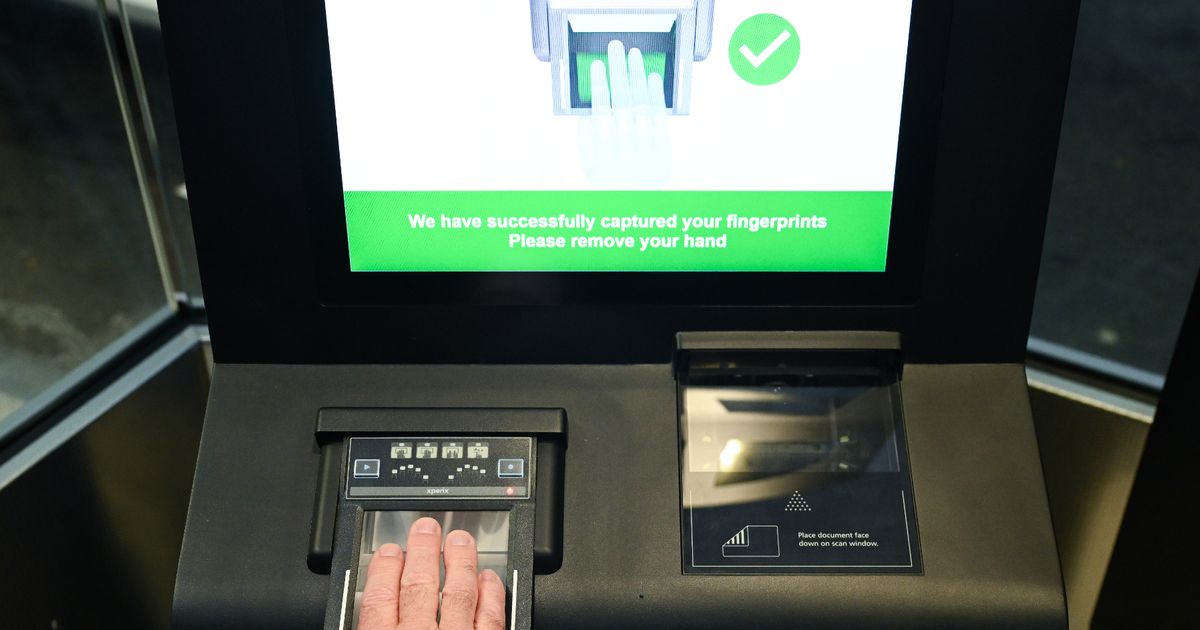The new system has been making headlines, but I for one, can’t wait until it’s fully implemented The system will take longer when registering, but once implemented, allows UK nationals access to self-service terminals(Image: Shared Content Unit)
The system will take longer when registering, but once implemented, allows UK nationals access to self-service terminals(Image: Shared Content Unit)
I recently went on a long weekend break to Copenhagen, Denmark. As a country within the Schengen area, I was eagerly anticipating the opportunity to register for the new Entry/Exit system.
I’ve been following the development of the system that registers biometric data and makes stamps obsolete in earnest, having covered many stories about it over the last year. As I would be flying out just after the 12th of October start date, I was keen to see the new system in action.
When booking my flights, I’d had to get a transfer to get to the city as I’d booked before Norwegian Airlines had announced its direct flights. This meant I had to go from Newcastle to Amsterdam, and then from Amsterdam to Copenhagen.
This was no trouble for me, having booked through KLM directly, they assured me of the transfer window (1 hour and 20 minutes on the way out), and I assumed they would know it would be enough. The early morning flight out of Newcastle was serene, and flying over the North East coast as the sun rose was particularly beautiful.
Landing safely in Amsterdam Schiphol airport, I thought this would be an easy connection to make for the rest of the journey. However, this was where the problems started.
As my partner and I walked through the airport at leisure, heading to our gate and assuming we would have plenty of time to relax once there, maybe even get a bit of breakfast. But no.
Despite arriving at the airport and travelling directly to another country in the Schengen area, we were made to go through passport control. Why this wouldn’t be done in Denmark, I didn’t know, but no matter, we still had time, and with the system having been operational for a week, a chunk of the passengers who would normally be stuck in the passport control queue could surely breeze through.
This was not the case. With an hour to go until the plane was due to take off, and with no idea as to how long it would take to walk there, we were faced with a hall full of people getting ready to present at passport control and get their passports stamped, with only a small handful of border agents on the desks.
There were some gates up and functioning, but only for pre-registered passengers, which was the vast minority of the people travelling through today. As we went to the queue, we were forced into the larger group of people, a group that would take at least 45 minutes to get through.
We were not going to make it, but instead, there was a designated member of staff calling out flight times to move through to the “short connection” section.
However, when the vast majority of people are being forced into the same queue, it gets busy. The short connection queue quickly ballooned, and we had to face the very real possibility of missing our next flight.
That meant if we missed that flight due to the long queue at security, even though we arrived at the airport on time and even booked through KLM, the Netherlands’ national airline, it was unlikely that the airline would pay any compensation or consider itself obliged to offer a free alternative flight. We would have been hundreds of pounds down before even setting foot in Copenhagen.
By a small miracle, we made it through the passport control queue with 15 minutes until the gate closed, and we ran. With five minutes to spare, we presented our passports at the desk and headed to the plane.
I can’t even explain the dread that rose in my chest seeing the long queue at passport control, a sea of travellers with only two people on the desk. But with a row of kiosks available, it could have made the process much smoother.
While the machines may take longer than a simple stamp, when there are only two people stamping, it’s clear which option will be quicker overall.
So, while the technology gremlins are doubtless going to raise their heads in the early days of implementation, it has to be worth it in the long run if the alternative is poorly implemented passport control, potentially costing passengers hundreds of pounds and unbelievable levels of stress.
